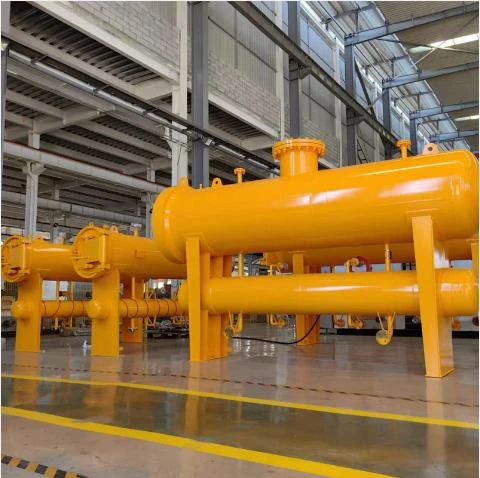
Dec . 10, 2024 15:33
Back to list
high pressure regulators
Understanding High Pressure Regulators Functions, Types, and Applications
High pressure regulators play a vital role in various industrial and commercial applications by controlling the pressure of gases and fluids. These components are essential for ensuring safety and efficiency in systems that involve compressed gases, such as those used in laboratories, factories, and gas distribution networks. In this article, we will explore the functions, types, and applications of high pressure regulators.
What is a High Pressure Regulator?
At its core, a high pressure regulator is a device designed to reduce and control the pressure of a gas or liquid from a high-pressure source to a lower, stable output pressure. This regulation is crucial to prevent damage to downstream equipment and to ensure safe operation. High pressure regulators are commonly used in settings where gases are stored under high pressure, such as gas cylinders or pipelines, and must be delivered at a lower, usable pressure for various applications.
Functions of High Pressure Regulators
1. Pressure Reduction The primary function of a high pressure regulator is to reduce the pressure of the incoming gas or fluid to a predetermined lower level. This function is vital in preventing equipment damage and ensuring safe operations.
2. Consistent Output Pressure High pressure regulators provide a stable output pressure even when the inlet pressure fluctuates. This consistency is crucial in critical processes where pressure variations can lead to performance issues.
3. Safety Mechanisms Many high pressure regulators come equipped with safety features such as overpressure protection and relief valves. These features protect both the regulator and the connected systems from excessive pressure build-up.
4. Flow Control In addition to pressure regulation, some high pressure regulators can also control the flow rate of gas or liquid, allowing for better process management.
Types of High Pressure Regulators
There are several types of high pressure regulators, each designed for specific applications and requirements
1. Single-Stage Regulators These regulators reduce pressure in one step and are typically used for applications where the inlet pressure remains relatively constant. They are simple in design and often more affordable.
high pressure regulators

2. Two-Stage Regulators These units provide a more stable output pressure by reducing pressure in two stages. The first stage brings the pressure down to an intermediate level, while the second stage delivers the final regulated pressure. Two-stage regulators are preferred for applications with fluctuating inlet pressures.
3. Backpressure Regulators Unlike standard regulators that reduce pressure downstream, backpressure regulators maintain a set pressure upstream by allowing excess pressure to vent. They are commonly used in processes where maintaining a specific upstream pressure is critical.
4. Digital Regulators These advanced regulators use electronic controls to monitor and adjust pressure automatically. Digital regulators offer greater precision and control, making them suitable for high-tech applications like semiconductor manufacturing or laboratory environments.
Applications of High Pressure Regulators
High pressure regulators are used across a wide range of industries, including
1. Industrial Manufacturing In manufacturing processes, high pressure regulators are essential for controlling gases used in welding, cutting, and material processing.
2. Medical Supplies In the healthcare sector, these regulators are vital in managing the pressure of gases used in medical devices, such as anesthesia machines and oxygen therapy systems.
3. Laboratories High pressure regulators are crucial in laboratories for precise gas delivery during experiments and analyses, ensuring that researchers can maintain accurate conditions.
4. Petroleum and Natural Gas In the oil and gas industry, regulators manage pressures in pipelines, refineries, and distribution systems to ensure safe transport and processing of gases.
5. Food and Beverage Many applications in the food and beverage industry, such as carbonating drinks and controlling gas flow in packaging processes, rely on high pressure regulators for consistent performance.
Conclusion
High pressure regulators are indispensable components in a multitude of applications, ensuring safety and efficiency by controlling the pressure of gases and fluids. Understanding the various types and functions of these regulators can help industries choose the right equipment for their needs, ultimately contributing to safer and more efficient operations. With advancements in technology, the future of high pressure regulation seems promising, paving the way for even greater precision and reliability in various sectors.
Next:
Latest news
-
Safety Valve Spring-Loaded Design Overpressure ProtectionNewsJul.25,2025
-
Precision Voltage Regulator AC5 Accuracy Grade PerformanceNewsJul.25,2025
-
Natural Gas Pressure Regulating Skid Industrial Pipeline ApplicationsNewsJul.25,2025
-
Natural Gas Filter Stainless Steel Mesh Element DesignNewsJul.25,2025
-
Gas Pressure Regulator Valve Direct-Acting Spring-Loaded DesignNewsJul.25,2025
-
Decompression Equipment Multi-Stage Heat Exchange System DesignNewsJul.25,2025

